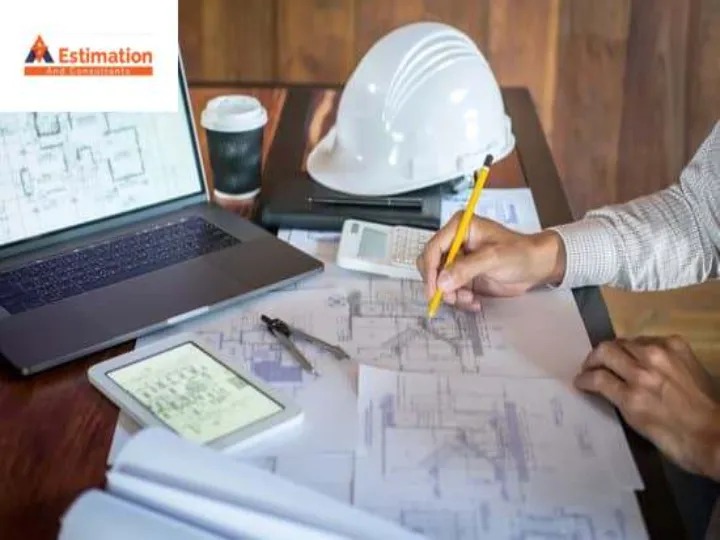Accurate commercial estimates are the foundation of any large-scale construction project. Without precise calculations, businesses risk budget overruns, delays, and financial instability. Estimating a large project is not just about crunching numbers; it requires a thorough understanding of materials, labor costs, potential risks, and industry trends. Even a small miscalculation can escalate into significant financial losses, making accuracy in estimation a critical factor for project success.
A well-prepared estimate serves as a roadmap, guiding project managers, contractors, and stakeholders through the budgeting process. It ensures that resources are allocated properly, potential challenges are identified early, and financial decisions are based on reliable data. In this guide, we’ll explore the essential steps and strategies to ensure the highest level of accuracy in commercial estimates, reducing risks and improving overall project efficiency.
The Importance of Accurate Commercial Estimates
Precision in commercial estimating directly impacts the success of large-scale projects. When an estimate is inaccurate, it can lead to unexpected expenses, forcing businesses to either cut costs elsewhere or secure additional funding. In worst-case scenarios, budget miscalculations can result in project abandonment, legal disputes, or financial losses that damage a company’s reputation.

An accurate estimate is also crucial for effective decision-making. Project managers rely on precise cost calculations to plan labor schedules, procure materials, and manage subcontractors. Clients and investors, on the other hand, expect transparency in budget projections. A well-structured estimate builds trust between contractors and stakeholders, ensuring that financial expectations align with project realities.
Moreover, accurate estimates prevent unnecessary revisions during construction. When an estimate accounts for all possible variables—such as material price fluctuations, site conditions, and labor availability—there’s less likelihood of encountering unexpected costs that require last-minute changes. This results in a smoother construction process, fewer disputes, and a higher probability of project completion within the established budget and timeline.
Key Steps to Achieve Accuracy in Commercial Estimating
1. Conduct Thorough Pre-Project Planning
The accuracy of an estimate starts with a comprehensive understanding of the project. Before estimating costs, it’s essential to assess the project’s scope, specifications, and requirements. This includes reviewing architectural and engineering drawings, understanding zoning regulations, and evaluating the site conditions.
A detailed project plan should outline every aspect of construction, including materials, labor needs, equipment usage, and subcontractor involvement. The more information available at the beginning, the fewer assumptions an estimator has to make, reducing the chances of errors.
2. Use Updated and Reliable Cost Data
Commercial estimating relies on precise material and labor cost data. Prices fluctuate due to market conditions, supply chain disruptions, and economic factors. Using outdated cost information can lead to underestimations that put the project at risk.

To ensure accuracy, estimators should:
- Utilize industry databases and cost estimation software that provide real-time pricing for materials, labor, and equipment.
- Regularly update material costs based on supplier quotes and market trends.
- Consider regional cost variations, as labor rates and material prices differ depending on location.
Additionally, it’s crucial to factor in inflation and future price changes. Large-scale projects often span several months or even years, during which costs may increase. Adjusting estimates to account for these changes helps prevent budget shortfalls later.
3. Account for Labor Productivity and Availability
Labor costs are a significant component of any commercial estimate. However, estimating labor expenses isn’t just about calculating hourly wages—it also involves understanding worker productivity and availability.
Different trades have varying efficiency rates, and unforeseen factors such as bad weather, supply chain delays, or labor shortages can impact productivity. Estimators must consider:
- The number of skilled workers needed for each phase of the project.
- Productivity rates based on historical data and industry benchmarks.
- Overtime and shift differentials if work needs to be expedited.
Additionally, working with unionized labor can introduce additional costs, such as benefits and insurance. Understanding these labor-related expenses ensures that estimates reflect realistic costs, preventing financial discrepancies during construction.
4. Identify and Mitigate Potential Risks
No large-scale project is without risks, and failing to account for potential challenges can lead to significant cost overruns. Identifying risks early allows estimators to incorporate contingency funds into the estimate, ensuring that unexpected expenses don’t derail the budget.
Common risks include:
- Changes in project scope that require additional work.
- Unforeseen site conditions, such as unstable soil or hazardous materials.
- Delays caused by permit approvals, supply chain disruptions, or weather conditions.
A contingency budget—typically 5% to 15% of the total estimate—should be included to cover unexpected costs. However, it’s equally important to have strategies in place to minimize these risks, such as detailed site assessments and early engagement with regulatory authorities.
5. Use Advanced Estimating Software
Manual estimation methods increase the likelihood of errors, especially for large-scale projects with multiple cost components. Advanced estimating software helps improve accuracy by automating calculations, reducing human errors, and providing detailed cost breakdowns.

Modern commercial estimating tools allow:
- Integration with real-time cost databases for up-to-date pricing.
- Customization based on project specifications and regional factors.
- Scenario analysis to compare different budgeting options and risk assessments.
By leveraging technology, estimators can work more efficiently and produce more reliable cost projections, ultimately leading to better financial planning and project execution.
6. Verify and Cross-Check Estimates
Even with the most advanced estimating tools, human oversight remains critical. Every estimate should undergo a thorough review process before finalization. This involves cross-checking calculations, validating material quantities, and reviewing historical project data to ensure consistency.
Seeking input from experienced project managers, engineers, and subcontractors can also improve estimate accuracy. Their insights can help identify overlooked costs or unrealistic assumptions, leading to a more refined and realistic budget.
The Role of Professional Estimating Services
For large-scale commercial projects, working with professional estimating services can significantly enhance accuracy. Experienced estimators bring specialized knowledge, industry expertise, and access to advanced tools that help produce precise cost projections.

Professional estimators:
- Conduct in-depth market research to ensure accurate pricing.
- Analyze historical data to identify cost trends and potential savings.
- Reduce errors by following standardized estimation methodologies.
By outsourcing estimating services, businesses can focus on project execution while ensuring that their financial planning is backed by expert calculations.
Conclusion
Ensuring accuracy in commercial estimates for large projects is not just a matter of adding up numbers—it requires meticulous planning, up-to-date cost analysis, risk assessment, and the use of advanced estimating tools. A precise estimate helps prevent budget overruns, enhances financial decision-making, and fosters trust between contractors and stakeholders.
By following best practices such as thorough pre-project planning, utilizing reliable cost data, accounting for labor productivity, identifying risks, and leveraging estimating software, businesses can create more accurate and dependable estimates. Additionally, working with professional estimating services further strengthens the reliability of cost projections, ensuring that projects stay on budget and on schedule.
At AS Estimation & Consultants, we specialize in delivering accurate, detailed, and data-driven commercial estimates to help businesses manage costs effectively. Contact us today to streamline your estimating process and ensure financial success for your next large-scale project.


